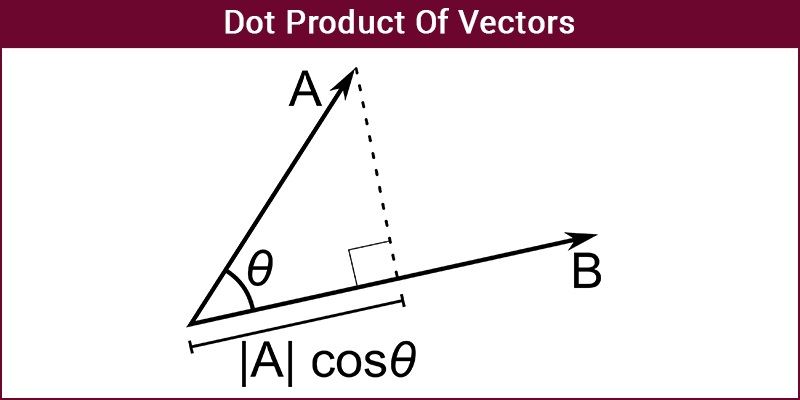Dot Product
The Dot Product of Vectors can be defined in two ways:
- Geometrically
- Algebraically

Dot Product – Geometrical Definition
The Dot Product of Vectors is written as a.b=|a||b|cosϴ
Where |a| and |b| are the magnitudes of vector a and b and ϴ is the angle between vector a and b.
If the two vectors are Orthogonal, i.e., the angle between them is 90 then a.b=0 as cos 90 is 0.
If the two vectors are parallel to each other the a.b=|a||b| as cos 0 is 1.
Dot Product – Algebraic Definition
The Dot Product of Vectors is written as
Dot product of vector – An example
Let there be two vectors [6,2,-1] and [5,-8,2]
a.b=(6)(5)+(2)(-8)+(-1)(2)
a.b=30-16-2
a.b=12
Let there be two vectors |a|=4 and |b|=2 and ϴ=60
a.b=|a||b|cos 60
a.b=4.2cos60
a.b=4
Dot Product of Vector – Properties
The following are the Vector properties:
Commutative property
a.b=b.a
a.b=|a||b|cosϴ
a.b=|b||a|cosϴ
Distributive property
a.(b+c)=a.b+a.c
Bilinear property
a.(rb+c)=r.(a.b)+(a.c)
Scalar Multiplication property
(xa).(yb)=xy(a.b)
Non-Associative property
Because a dot product between a scalar and a vector is not allowed
Orthogonal property
Two vectors are orthogonal only if a.b=0
Dot Product of Vector – Valued Functions
The dot product of vector-valued functions, r(t) and u(t) each gives you a vector at each particular “time” t, and so the function r(t)⋅u(t) is a scalar function.
Inferring, the dot product at each given t; this product precisely measures the relationship between r(t) and u(t).